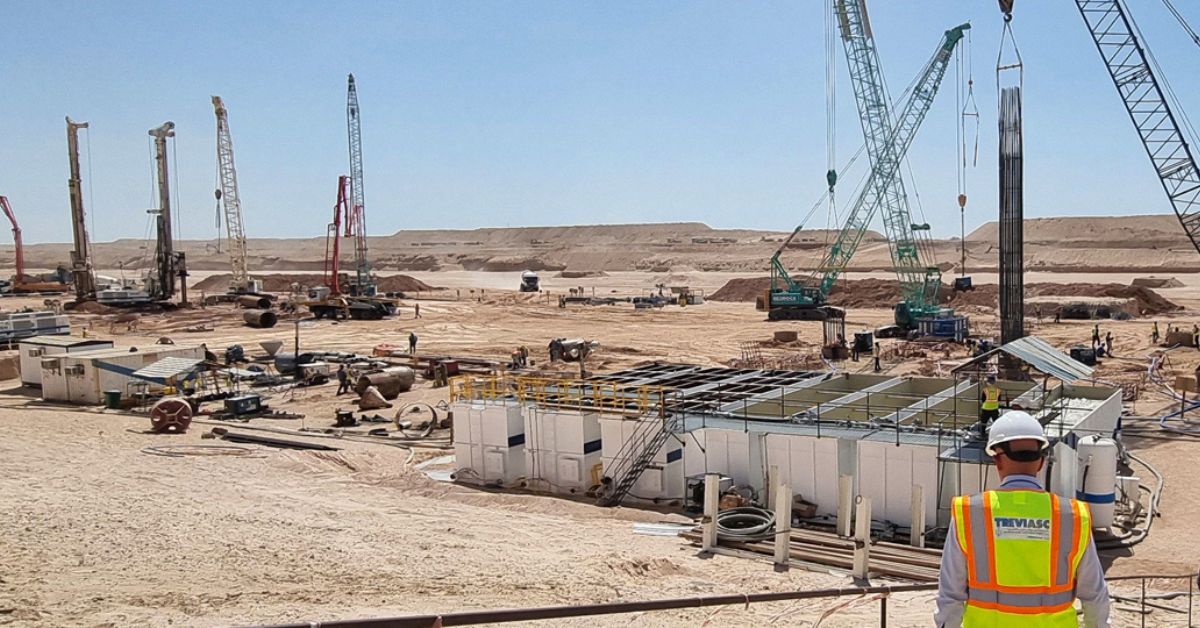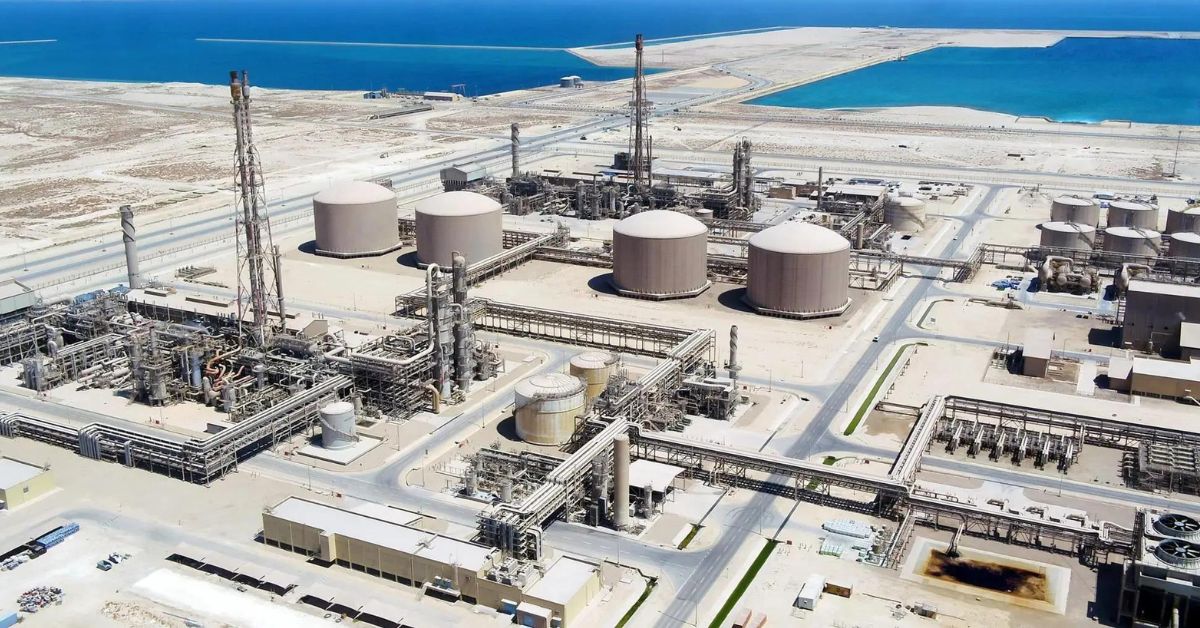RIYADH — Saudi Arabia plans to allocate $180 billion annually to industrial and mega projects from 2025 to 2028, according to a latest report by consulting firm McKinsey.
The Kingdom has significant projects in progress, valued at roughly $1.3 trillion. Notable developments include the high-tech NEOM city and the Red Sea resorts along the country’s western coast. Spending is projected to peak at $180 billion annually in 2026 and 2027.
This anticipated annual contract value triples the historical average, jumping from $50 billion to $150 billion.
Mega projects in Saudi Arabia are pivotal in its strategy to evolve into a top tourist destination and diversify its economy beyond oil.
To realize these lofty objectives, Saudi Arabia has granted construction contracts totaling $250 billion since 2016. Additionally, the nation is introducing a new airline and airport aligned with the 2030 plan spearheaded by Crown Prince Mohammed bin Salman.
The Kingdom’s ambitious plans also encompass the construction of 660,000 homes, roughly mirroring Dubai’s entire housing supply. They aim to add 289,000 hotel rooms, 6 million square meters of office space, and 5.3 million square meters of retail area.
To successfully complete these expansive projects, McKinsey suggests a thorough overhaul of Saudi Arabia’s contracting sector, the adoption of industrial construction, and the integration of digital and analytical tools to ensure timely project completion.
By implementing these new methodologies, project completion times could be slashed by 40%, resulting in cost savings and minimized project risks.
At A Glance $1.3 Trillion Projects: Key Saudi developments include the NEOM city and Red Sea resorts. Tripling Contract Value: Annual contract value expected to rise from $50 billion to $150 billion. Tourism & Diversification: Mega projects aim to position Saudi Arabia as a top tourist destination and reduce oil dependency. $250 Billion Contracts: Since 2016, the Kingdom has awarded construction contracts of this value. 2030 Vision: Introduction of a new airline and airport in line with Crown Prince Mohammed bin Salman's 2030 plan. Housing & Infrastructure: Plans to build 660,000 homes, 289,000 hotel rooms, and millions of square meters for offices and retail. Recommendations: Overhaul contracting sector, adopt industrial construction, and integrate digital tools. 40% Faster Completion: New methodologies could reduce project times and costs. Industrial vs. Traditional: Industrial construction could be more cost-effective and position Saudi Arabia as a regional construction hub. Workforce Expansion: White-collar construction workforce to double by 2025, adding 150,000 professionals. Labor Force Surge: Over threefold growth expected, leading to potential shortages in 16 of 25 essential construction materials. Benefits of Industrial Construction: 30-40% reduction in timelines, cost savings, and enhanced safety measures. Collaborative Approach: Report suggests phased collaboration, starting with traditional contracts and moving to Integrated Project Delivery. Rapid Workforce Influx: Large projects might hire more in two years than major companies do in two decades. Focus on Training: Emphasis on the need for subcontractors to adequately train their workforce. Labor Costs: They account for over 25% of a typical project's value, highlighting the need for skill and competency investment. Strengthening Ties: Public and private sectors in Saudi Arabia urged to foster ties between industrial entities and mega-projects. Supply Chain Development: Encouragement to establish a local supply chain with top national companies. Tech Integration: Urgent need for a systematic approach to technology in the construction sector. Global Economic Impact: A $1 per hour global improvement in construction productivity could add nearly $100 billion to the world economy.
McKinsey emphasized that the scale of Saudi Arabia’s plans indicates that industrial construction might be more cost-effective than traditional methods. This shift could position the country as a hub for the construction industry in the region and potentially beyond. However, McKinsey cautioned that realizing this vision will be challenging.
McKinsey projects a significant surge in Saudi Arabia’s construction workforce in the coming years. The white-collar construction workforce is expected to double from its 2021 figures by 2025, introducing an additional 150,000 engineering professionals.
Furthermore, the labor force within the construction sector is anticipated to grow more than threefold, incorporating millions of new workers. This rapid expansion will inevitably strain the local supply chain. The report indicates a potential shortage in 16 out of the 25 essential construction materials.
The advantages of top-tier industrial construction are evident: it offers an estimated 30 to 40 percent reduction in project timelines, coupled with decreased costs, minimized project risks, enhanced health and safety measures, and superior quality output.
Given the vast scale of Saudi Arabia’s plans, industrial construction is poised to be more cost-effective than conventional on-site methods. This shift could potentially position Saudi Arabia as a central hub for construction manufacturing, not just in the region but globally.
The report also suggests a phased approach for entrepreneurs in Saudi Arabia to foster collaboration within the ecosystem. Initially, traditional contracts can be employed, emphasizing collaboration on specific areas, such as transferable lump-sum contracts.
As trust builds among stakeholders, they can explore the Integrated Project Delivery (IPD) model. In this collaborative framework, project owners select partners early on, based on qualifications, interest, and pricing considerations.
The urgency of large capital projects often necessitates a rapid influx of workers. Such projects might recruit more personnel in their initial two years than some globally renowned companies do in their first 20 years.

However, this speed can compromise productivity and skill levels. This is particularly true when much of the labor force is sourced from small subcontractors who may lack the resources to adequately train their employees.
Given that labor costs account for over a quarter of a typical project’s value, there’s a compelling case for project owners and engineering, procurement, and construction (EPC) companies to collaboratively invest in enhancing the skills and competencies of their workforce.
In the Kingdom of Saudi Arabia, both the public and private sectors have the opportunity to foster stronger ties between industrial players and mega-projects. This can be achieved by coordinating efforts to develop capabilities both within the Kingdom and internationally.
A proactive step would be to establish a local supply chain comprising top national companies. Building on existing incentive programs can be beneficial, whether the aim is to address shortages or to promote broader collaboration between different entities.
There’s also a pressing need for both project owners and the construction sector to adopt a more systematic approach to technology. The potential benefits are substantial. As per our colleagues’ estimates, a global $1 per hour improvement in construction productivity could inject nearly $100 billion of additional value into the world economy.








